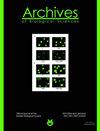铜矿开采及相关工业活动对佩克河水生大型无脊椎动物群落的影响评估(塞尔维亚)
IF 0.8
4区 生物学
Q4 BIOLOGY
引用次数: 1
摘要
佩克河的上游靠近塞尔维亚最大的矿区之一。为评价铜矿开采对河流生物群的影响,分析了定量和定性的大型无脊椎动物群落结构,并采用标准生物指标对河流生态状况进行了评价。在沿河的6个地点收集了数据。共记录了75个大型无脊椎动物类群。参考点有记录类群最多(48个),生物多样性指数H=2.3。而样地2的分类群数量最少(8个),多样性指数较低(H=1.15),整体生态状况极差,受采矿排放影响较大。在样地1,蜉蝣目、翅翅目和毛翅目(EPT)占46.30%,而在样地2,则完全不存在,双翅目(70%)和寡毛目(20%)占主导地位,反映了采矿业对上游河段的强烈影响。污染源下游水质的逐步改善表明,这条中等规模的河流有能力克服严重污染,实现沿江的自我振兴。本文章由计算机程序翻译,如有差异,请以英文原文为准。
Assessment of the impact of copper mining and related industrial activities on aquatic macroinvertebrate communities of the Pek River (Serbia)
The upper stretch of the Pek River is located in proximity to one of the largest mining sites in Serbia. To estimate the influence of copper mining on river biota, the quantitative and qualitative macroinvertebrate community structure was analyzed, and the ecological status of the river was assessed using standard biological indices. Data was gathered at 6 sites along the river. A total of 75 macroinvertebrate taxa were recorded. The reference site had the highest number of recorded taxa (48) and a high biodiversity (diversity index H=2.3). In contrast, the lowest number of taxa (8), a low diversity index value (H=1.15), and a very poor overall ecological status were recorded at site 2, which is heavily influenced by mining discharge. The Ephemeroptera, Plecoptera and Trichoptera group (EPT) constituted 46.30% of the community at site 1 but was completely absent at site 2 where Diptera (70%) and Oligochaeta (20%) were dominant, reflecting a strong impact of the mining industry on the upper river stretch. A gradual improvement of water quality downstream of the pollution sources indicates that this medium-sized river has the capacity to overcome intensive pollution and to revitalize itself along its course.
求助全文
通过发布文献求助,成功后即可免费获取论文全文。
去求助
来源期刊
CiteScore
1.40
自引率
0.00%
发文量
25
审稿时长
3-8 weeks
期刊介绍:
The Archives of Biological Sciences is a multidisciplinary journal that covers original research in a wide range of subjects in life science, including biology, ecology, human biology and biomedical research.
The Archives of Biological Sciences features articles in genetics, botany and zoology (including higher and lower terrestrial and aquatic plants and animals, prokaryote biology, algology, mycology, entomology, etc.); biological systematics; evolution; biochemistry, molecular and cell biology, including all aspects of normal cell functioning, from embryonic to differentiated tissues and in different pathological states; physiology, including chronobiology, thermal biology, cryobiology; radiobiology; neurobiology; immunology, including human immunology; human biology, including the biological basis of specific human pathologies and disease management.

 求助内容:
求助内容: 应助结果提醒方式:
应助结果提醒方式:


